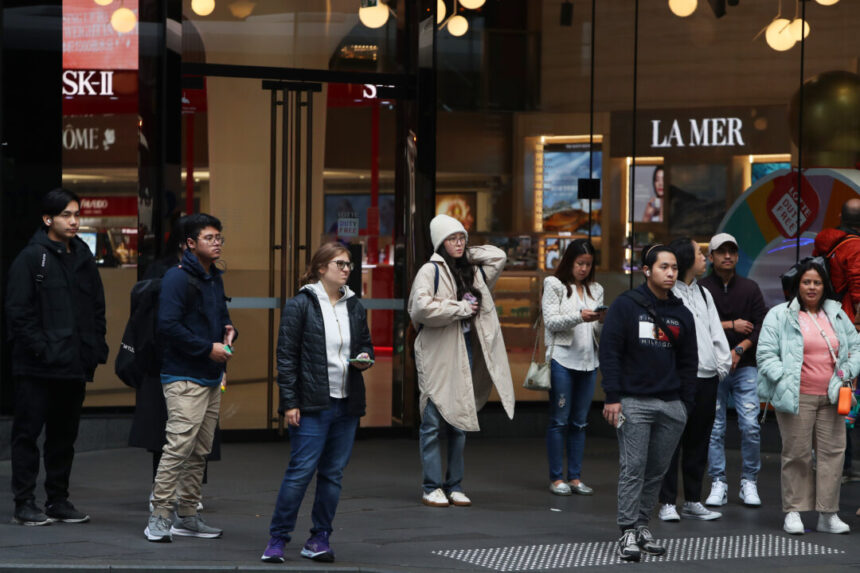Although inflation has dropped to 2.7 percent in August, reaching its lowest point in three years, the RBA chief has cautioned that this decrease may only be temporary.
The latest data from the Australian Bureau of Statistics shows that annual headline inflation fell from a 3.5 percent increase in July to 2.7 percent in August. This marks the first time since October 2021 that inflation has fallen within the Reserve Bank of Australia’s target range of 2 to 3 percent.
RBA Governor Michele Bullock mentioned on Sept. 24 that relief measures funded by taxpayers would contribute to lowering headline inflation.
Freebies at Work
In July, Australians benefited from significant reductions in electricity bills due to the government’s $75 energy rebate announcement. The ABS reported a 17.9 percent overall reduction in electricity prices as a result of this initiative.
Additionally, public transport costs decreased by 1.5 percent in the 12 months leading up to August 2024, mainly due to cheaper or free public transport schemes in certain cities like Brisbane, Hobart, and Darwin. Urban transport fares saw a monthly decline of 5.2 percent in August.
The Queensland Labor government’s 50-cent public transport fare initiative, which began on Aug. 5, 2024, also contributed to the decrease in public transport costs.
Global Factors at Play
The drop in inflation can also be attributed to reduced global demand for fuel, resulting in a 7.6 percent decrease in automotive fuel prices compared to August 2023. This is a significant change from the 4.0 percent increase recorded in July.
The ABS noted that fuel prices have decreased in three of the last four months, driven by reduced global demand and lower oil prices.
No Relief in Housing and Food Sector
While inflation has decreased in certain sectors, housing continues to be a concern. Prices for new homes and major renovations increased by 5.1 percent over the past year, with builders citing increased costs for labor and materials.
Rents rose by 6.8 percent, slightly lower than the 6.9 percent increase in July. This surge in rental prices is due to a tight rental market in most capital cities.
Food and non-alcoholic beverage prices increased by 3.4 percent in the year leading up to August, driven by a significant price jump of 9.6 percent in fruits and vegetables.
Despite these fluctuations, dairy products saw a slight decline in prices by 0.2 percent, primarily due to reduced cheese prices.
Overall, while certain sectors are experiencing fluctuations in prices, the pace of increase has started to slow down in some areas.
Cost of Travel Up
In the tourism sector, holiday travel and accommodation prices increased by 2.8 percent in the 12 months leading up to August. This indicates that consumers paid more for vacations and lodging compared to the previous year.
However, in August alone, prices experienced a decrease of 1.4 percent, primarily driven by a decline in domestic holiday travel and accommodation costs.
RBA Says Wait and See
Despite the temporary improvements in inflation numbers, RBA Governor Michele Bullock emphasized that it does not mean inflation is effectively managed or sustainable within the target range.
She mentioned that inflation is expected to enter the target range by the end of the year but is projected to rise to 3.7 percent a year later once government support measures end. It is anticipated that things will stabilize by mid-2026.
Please rewrite this sentence.
Source link





